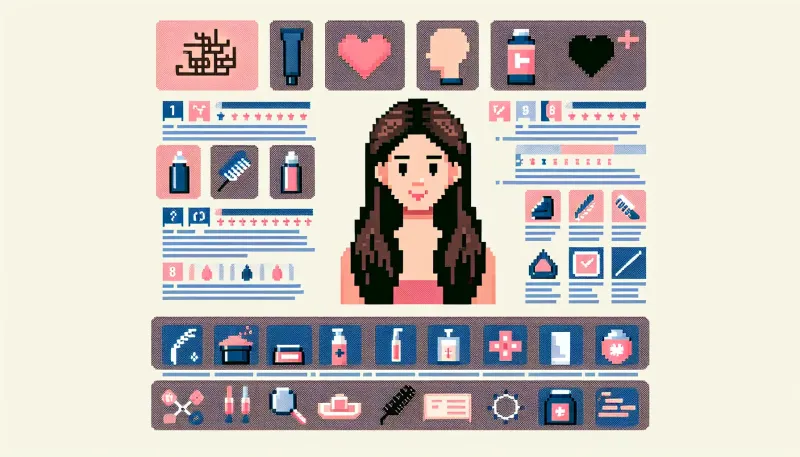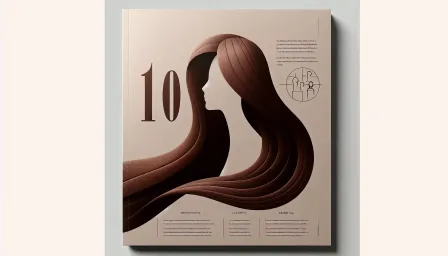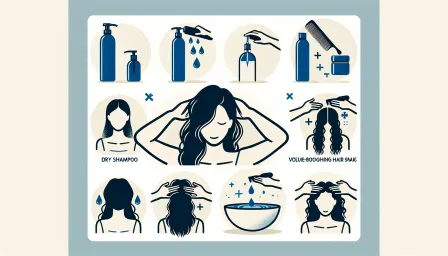Top 10 Hair Treatments for Hair Loss: Effective Solutions for Thinning Hair

Discover the top 10 hair treatments for hair loss and thinning hair, including well-researched and effective solutions to combat hair thinning and promote hair growth.
Hair loss can be a distressing experience, affecting both men and women. Various factors such as genetics, hormonal imbalances, stress, and poor nutrition can contribute to thinning hair. However, there are numerous hair treatment options available that can help slow down or even reverse hair loss. This article explores the top 10 hair treatments for hair loss, providing effective solutions for those struggling with thinning hair.
1. Minoxidil (Rogaine)
Minoxidil, commercially known as Rogaine, is a topical treatment widely recognized for its effectiveness in promoting hair growth. Initially developed to treat high blood pressure, Minoxidil was found to have an interesting side effect: increased hair growth. It works by revitalizing hair follicles and increasing their size, leading to thicker, stronger hair. Minoxidil is available over-the-counter and can be used by both men and women.
2. Finasteride (Propecia)
Finasteride, marketed under the brand name Propecia, is an oral medication commonly prescribed for male pattern baldness. It works by inhibiting the conversion of testosterone to dihydrotestosterone (DHT), a hormone responsible for shrinking hair follicles. By reducing DHT levels, Finasteride helps to halt hair loss and, in some cases, stimulate new hair growth. It is important to consult a healthcare provider before using Finasteride, as it is not suitable for women and may have potential side effects.
3. Low-Level Laser Therapy (LLLT)
Low-Level Laser Therapy (LLLT) is a non-invasive treatment that uses red light wavelengths to stimulate hair follicles and promote hair growth. This therapy can be administered through devices such as laser combs and helmets that emit low-level lasers. LLLT is believed to improve blood circulation and enhance cellular metabolism in the scalp, encouraging the growth of healthier, thicker hair. Consistent use over several months is typically required to see significant results.
4. Platelet-Rich Plasma (PRP) Therapy
Platelet-Rich Plasma (PRP) therapy is a relatively new and advanced treatment for hair loss. It involves drawing a small amount of the patient's blood, processing it to concentrate the platelets, and then injecting the PRP back into the scalp. The growth factors in PRP are believed to stimulate hair follicles and promote natural hair growth. PRP therapy shows promising results for both men and women experiencing hair thinning.
5. Hair Transplant Surgery
Hair transplant surgery is a more invasive but highly effective solution for permanent hair restoration. The procedure typically involves removing hair follicles from one part of the body (usually the back or sides of the scalp) and transplanting them to the thinning or balding areas. There are two main techniques: Follicular Unit Transplantation (FUT) and Follicular Unit Extraction (FUE). A qualified surgeon can help determine the best method based on the patient's specific needs and level of hair loss.
6. Scalp Micropigmentation (SMP)
Scalp Micropigmentation (SMP) is a non-surgical cosmetic treatment that involves tattooing tiny dots on the scalp to mimic the appearance of hair follicles. This treatment creates the illusion of fuller hair and is particularly effective for those with thinning hair or small areas of baldness. SMP can also be used to enhance the appearance of a hair transplant or hide scars.
7. Hair Growth Shampoos and Conditioners
There are numerous shampoos and conditioners formulated to promote hair growth and reduce hair loss. These products typically contain ingredients like biotin, caffeine, ketoconazole, and saw palmetto, which are known to strengthen hair and stimulate follicles. While hair growth shampoos and conditioners may not produce dramatic results, they can complement other treatments and improve the overall health of the scalp and hair.
8. Nutritional Supplements
Nutritional deficiencies can play a significant role in hair loss. Supplements such as biotin, iron, zinc, and vitamins A, C, D, and E can support hair health and growth. Consulting with a healthcare professional can help identify any deficiencies and recommend the right supplements to address them. Additionally, maintaining a balanced diet rich in protein and essential nutrients is crucial for healthy hair.
9. Essential Oils
Essential oils like rosemary, lavender, and peppermint have been used for centuries to promote hair health and stimulate growth. These oils can be diluted with carrier oils (such as coconut or jojoba oil) and massaged into the scalp. Regular scalp massages with essential oils can improve blood circulation, reduce stress, and potentially promote hair growth.
10. Herbal Remedies
Herbal remedies have long been used to treat hair loss. Ingredients like saw palmetto, ginseng, and green tea are believed to inhibit DHT production and promote hair growth. These herbs can be taken as supplements, used in topical treatments, or consumed as teas. While more research is needed to confirm their effectiveness, many people have reported positive results.
Conclusion
Hair loss can be a challenging condition to deal with, but with the variety of treatments available today, there is hope for those experiencing thinning hair. From medications like Minoxidil and Finasteride to advanced treatments such as PRP therapy and hair transplants, individuals have numerous options to explore. It is essential to consult with healthcare providers or hair specialists to determine the most suitable treatment based on individual needs and the underlying cause of hair loss. By addressing the issue early and taking proactive steps, it is possible to regain fuller, healthier hair.



























